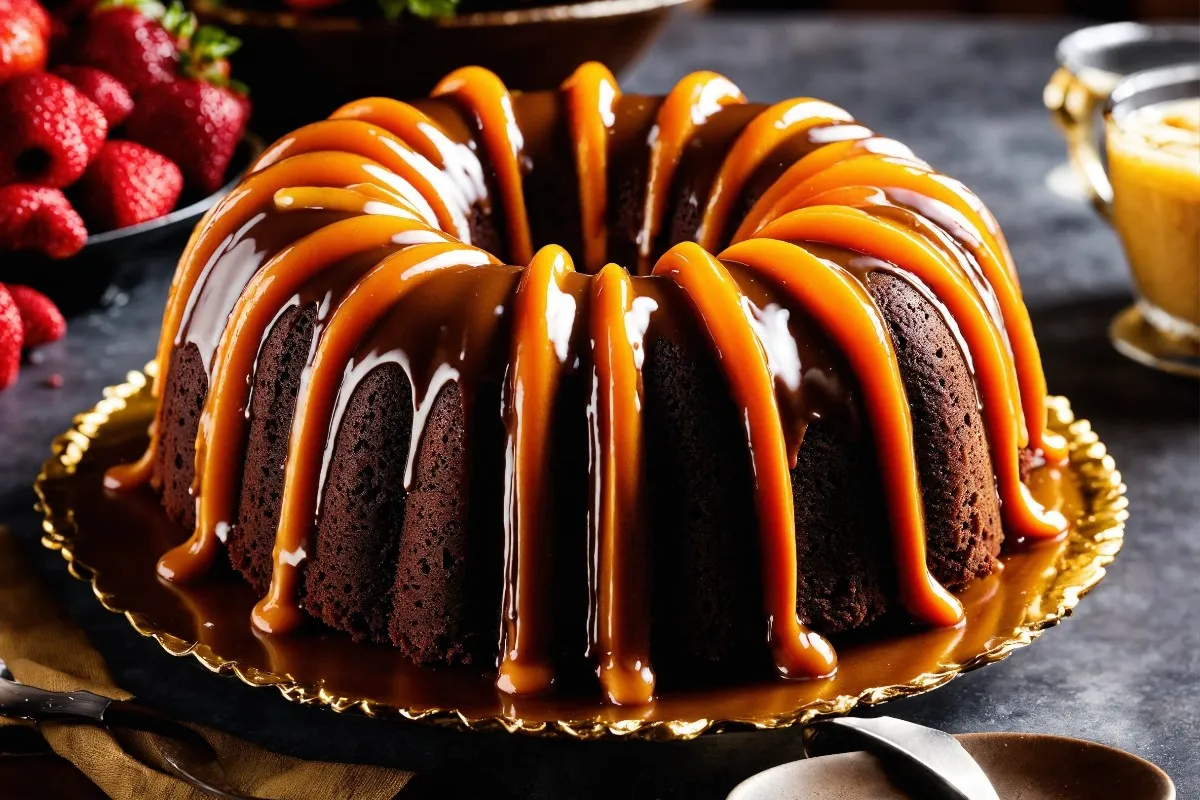Ah, the Bundt cake – a timeless classic in the world of baking! But what is the best release for a bundt cake? This question is at the heart of turning a good Bundt cake into a great one. It’s not just about baking; it’s about ensuring that your creation emerges flawlessly from its pan, a true centerpiece and a testament to the baker’s skill. In this comprehensive guide, we’ll explore the secrets of the perfect release, diving deep into the techniques that ensure your Bundt cake not only tastes heavenly but also looks impeccably perfect. So, roll up your sleeves, and let’s get baking!
Introduction to Bundt Cakes
Understanding Bundt Cakes
Bundt cakes, with their distinctive ring shape and elegant contours, have been gracing our tables and tantalizing our taste buds for decades. But what’s the story behind these scrumptious delights?
History and Popularity of Bundt Cakes
Originating from Europe and popularized in America, Bundt cakes have a rich history. They’re not just cakes; they’re a slice of culinary heritage. Their popularity skyrocketed when a certain Bundt cake won a national baking contest in the 1960s, and since then, there’s been no looking back!
Challenges in Baking the Perfect Bundt Cake
Now, let’s talk turkey. Baking a Bundt cake can be a bit of a sticky wicket. The main challenge? Ensuring that your cake releases perfectly from the pan, showcasing those beautiful, intricate designs. It’s a task that requires a bit of know-how and a sprinkle of patience.
Preparing Your Bundt Pan
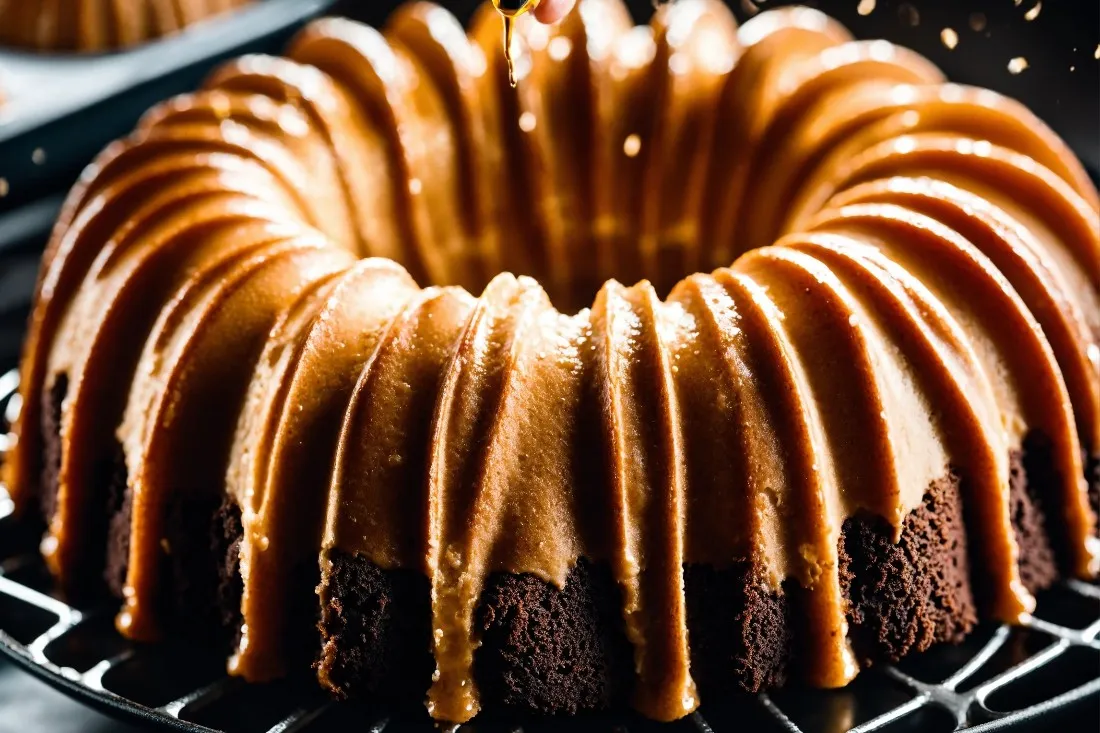
Selecting the Right Bundt Pan
Choosing the perfect Bundt pan is not just about picking the prettiest design; it’s about quality and functionality. Let’s dive into what makes a Bundt pan a baker’s best friend.
Importance of Quality Nonstick Bundt Pans
A high-quality nonstick bundt pan is the cornerstone of a successful Bundt cake. These pans ensure that your cake releases smoothly, maintaining those gorgeous, intricate details. But how do you spot a top-notch pan? Look for pans with heavy construction and a nonstick coating that feels durable. Remember, a good pan is an investment in your baking future!
Tips for Maintaining Your Bundt Pan
Once you’ve got your hands on that perfect pan, it’s crucial to treat it right. Avoid abrasive sponges and harsh detergents; these are the nemeses of nonstick coatings. Gently hand wash your pan and steer clear of metal utensils to keep it in tip-top shape. Remember, a well-cared-for pan is a long-lasting pan!
Greasing Techniques
Now, let’s talk about greasing – a critical step in ensuring your Bundt cake’s flawless release.
Best Greases for Bundt Pans
When it comes to greasing, not all fats are created equal. While butter might be tempting, its milk solids can act like glue, leading to sticking. Instead, opt for melted vegetable shortening or specialized baker’s nonstick cooking sprays like Baker’s Joy. These options provide a slick surface, ensuring your cake slips out effortlessly.
The Debate: Butter vs. Shortening vs. Cooking Sprays
It’s a topic of much debate among bakers. While some swear by butter for its flavor, others prefer shortening or cooking sprays for their effectiveness. The key is to find what works for you through trial and error. And remember, moderation is key to maintaining your pan’s longevity.
The Baking Process
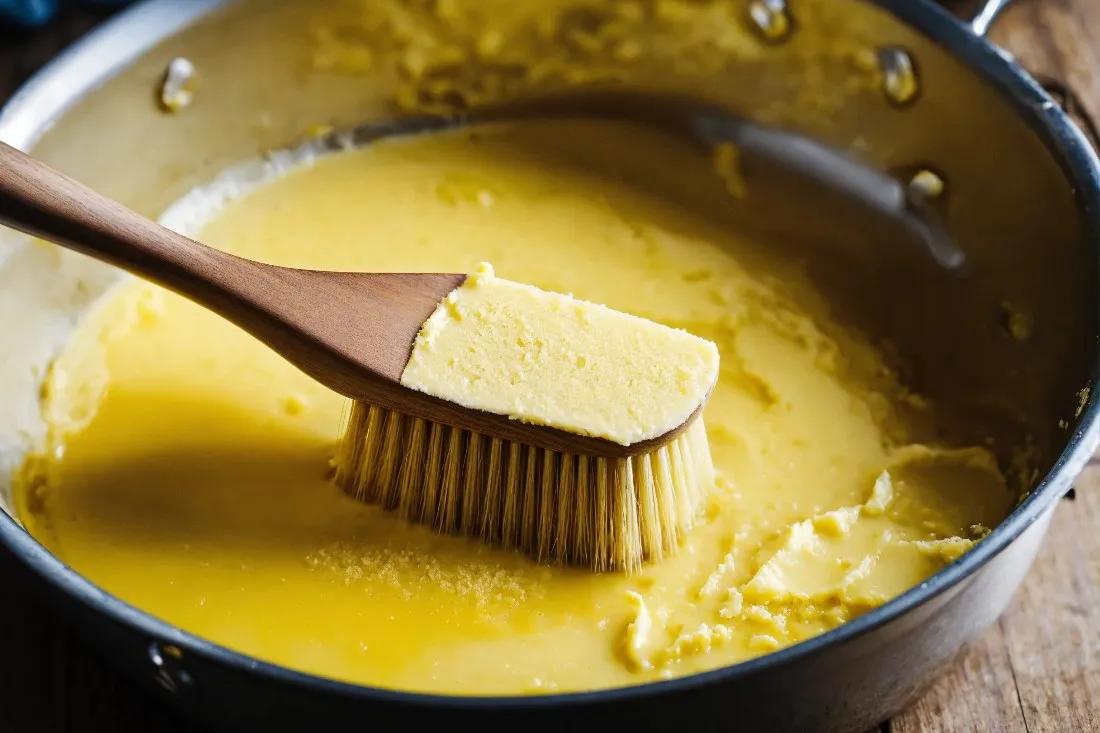
Greasing and Flouring Your Pan
Before you pour the batter into your Bundt pan, it’s crucial to prepare it properly. This step is key to ensuring your cake releases beautifully.
Timing and Technique in Greasing
- Firstly, it’s essential to grease your pan just before adding the batter. This prevents the grease from sliding down and pooling at the bottom.
- Additionally, make sure to use a silicone pastry brush or a soft cloth to evenly coat every crevice of the pan. It’s important to cover all the nooks and crannies to prevent sticking.
To Flour or Not to Flour?
- Furthermore, the decision to flour your pan after greasing is a personal one. Some bakers swear by this method, while others find it unnecessary.
- If you do choose to flour, consider using a fine sieve to evenly distribute a light coating. This can help provide an extra layer of non-stick protection, especially for intricate pan designs.
Pouring and Baking the Batter
Now, let’s move on to the actual baking process, where precision and care come into play.
Ensuring Even Distribution
- Firstly, when pouring the batter into the pan, do it slowly and evenly. This helps prevent air pockets and ensures a uniform bake.
- Additionally, gently tap the pan on the counter to settle the batter and remove any large air bubbles. This simple step can make a big difference in the final texture of your cake.
Optimal Baking Temperatures and Times
- Moreover, baking at the right temperature is crucial. Most Bundt cakes do well at a moderate temperature, typically between 325°F to 350°F.
- Also, be mindful of the baking time. Start checking for doneness a bit earlier than the recipe suggests. A toothpick or cake tester should come out clean or with just a few moist crumbs when inserted into the thickest part of the cake.
Post-Baking Tips
Releasing the Cake from the Pan
After your Bundt cake has finished baking, the next crucial step is the release. This can be the moment of truth for many bakers, where a perfect cake can either be achieved or lost.
Techniques for Loosening the Cake
- Firstly, it’s important to allow your cake to cool for about 10 minutes before attempting to remove it from the pan. This brief rest period lets the cake settle and firm slightly, making it less prone to breaking.
- Secondly, use a small, flexible silicone spatula or a plastic knife to gently loosen the edges of the cake from the pan. This step requires a delicate touch to avoid damaging the cake or scratching the pan.
Cooling Strategies
- Additionally, after loosening the edges, carefully invert the cake onto a cooling rack. This step should be done gently but confidently to ensure the cake doesn’t fall apart.
- Moreover, let the cake rest upside down on the rack for a few more minutes. This allows gravity to assist in the release process, helping the cake to gently detach from the pan.
Troubleshooting Common Issues
Even with the best preparation, sometimes Bundt cakes can present challenges when it comes to releasing them from the pan.
Dealing with a Stuck Cake
- Firstly, if your cake seems to be sticking, don’t panic. Place the pan over a pot of simmering water for a few minutes. The gentle steam can help loosen the cake without damaging it.
- Secondly, another method is to place a warm, damp kitchen towel over the inverted pan. The warmth and moisture can often encourage the cake to release.
Creative Solutions for Imperfect Cakes
- Furthermore, if your cake doesn’t come out perfectly, there are creative ways to salvage it. Consider turning it into a trifle, cake pops, or even serving it with a dollop of whipped cream and fresh fruit.
- Lastly, remember that baking is as much about problem-solving as it is about creating. Each challenge is an opportunity to learn and grow in your baking journey.
Exploring Bundt Cake Varieties and Innovations
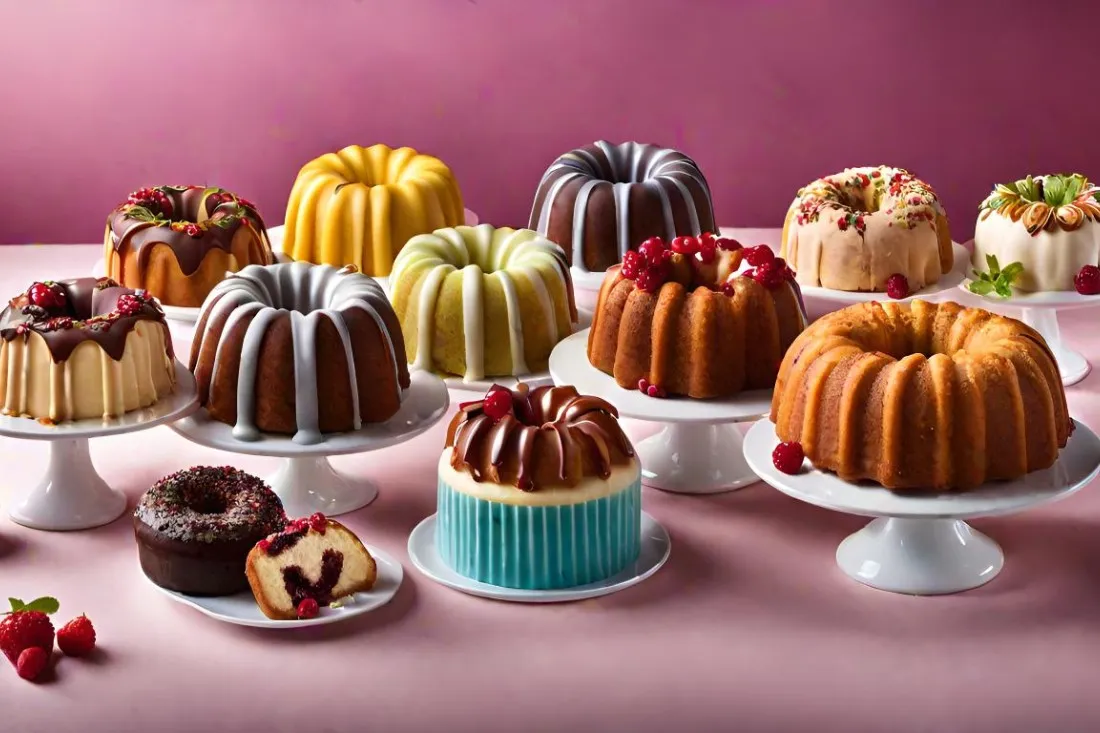
Diving into the World of Bundt Cakes
Now, let’s broaden our horizons and venture into the diverse and innovative world of Bundt cakes. This part is all about exploring the myriad of flavors and styles that make Bundt cakes a versatile and exciting dessert option.
Discovering New Flavors and Combinations
- Experimenting with Ingredients:
- First and foremost, the realm of ingredients offers endless possibilities. Imagine infusing your Bundt cakes with exotic spices, zesty fruits, or crunchy nuts. Each ingredient not only adds its unique flavor but also contributes to the texture and moisture of the cake. It’s like embarking on a culinary adventure with each new recipe.
- Seasonal and Festive Variations:
- Moreover, aligning your Bundt cake flavors with the seasons or festivities can be a delightful experience. Picture a pumpkin spice Bundt cake for autumn or a peppermint-chocolate version for the winter holidays. These seasonal twists not only make the cakes more relatable but also add a festive touch to your baking.
Embracing Modern Baking Trends
- Gluten-Free and Vegan Options:
- Furthermore, in today’s inclusive culinary world, adapting Bundt cake recipes to cater to gluten-free and vegan diets is not just thoughtful but also creative. Experimenting with alternative flours and binders can be a rewarding challenge, and the results can be surprisingly delicious.
- Artistic Decorations and Presentations:
- Lastly, let’s not forget the power of presentation. A beautifully decorated Bundt cake can be a feast for the eyes. Whether it’s a simple dusting of powdered sugar, an elegant glaze, or elaborate toppings, the way you present your Bundt cake can elevate it from a mere dessert to a work of art.
Mastering Advanced Bundt Cake Techniques
Elevating Your Bundt Cake Skills
Now, let’s step up our game and delve into advanced techniques that can transform your Bundt cakes from delightful to extraordinary. This part is for those who are ready to explore beyond the basics and add a touch of finesse to their baking repertoire.
Advanced Baking Techniques
- Marbling and Layering:
- Firstly, marbling and layering different colored batters can create a visually stunning effect. It’s like an artist blending colors on a canvas, but in this case, your canvas is the cake batter. The trick here is to gently layer or swirl the batters without overmixing, maintaining distinct colors and patterns.
- Incorporating Fillings and Surprises:
- Additionally, imagine slicing into a Bundt cake to reveal a hidden filling or a surprise element. Fillings like fruit compotes, creamy centers, or even a chocolate ganache can elevate a simple Bundt cake to a gourmet level. The key is to place the filling carefully and ensure it’s encased within the batter to prevent it from sinking or leaking.
Perfecting the Art of Flavor Balancing
- Pairing Flavors:
- Furthermore, mastering the art of flavor pairing is essential. It’s about understanding how different flavors complement or contrast each other. For instance, pairing a citrusy lemon batter with a rich blueberry filling can create a delightful balance of tart and sweet.
- Using Liquors and Extracts:
- Lastly, using liquors and extracts can add depth and complexity to your Bundt cakes. A splash of rum or almond extract can intensify flavors and add an aromatic touch. However, it’s crucial to use these elements judiciously, as they can be overpowering if overused.
The Science Behind Perfect Bundt Cakes
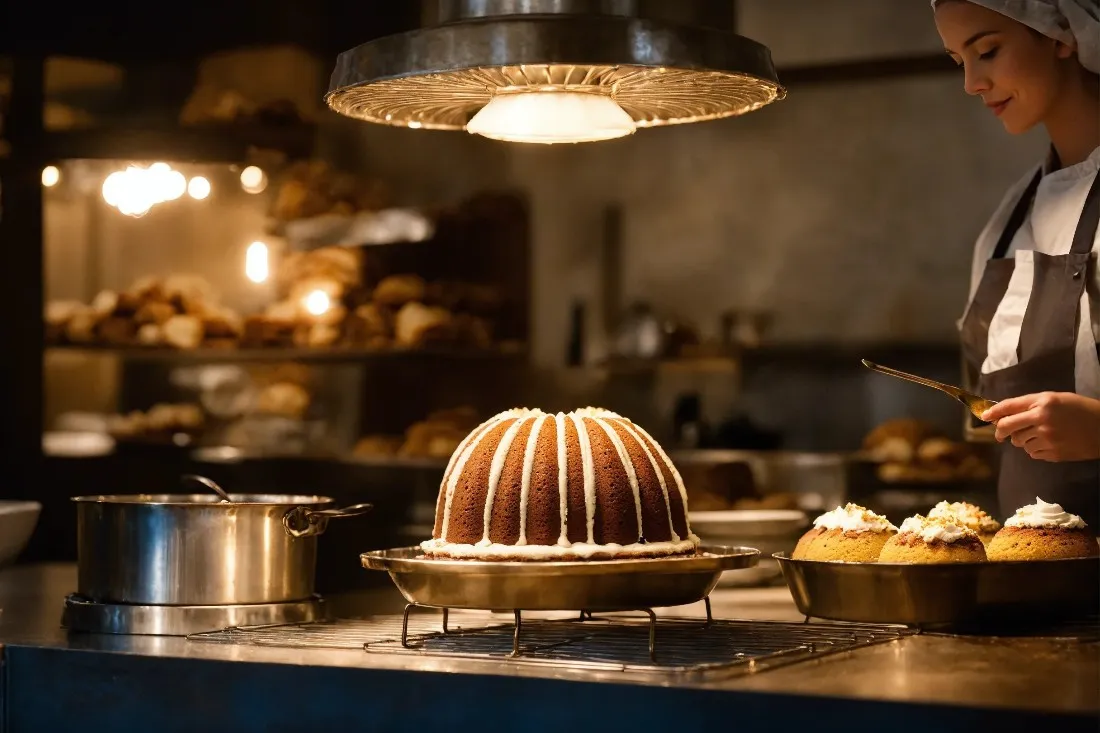
Unraveling the Mysteries of Bundt Cake Baking
In this enlightening section, we’re going to delve into the fascinating science behind Bundt cake baking. Understanding these principles not only demystifies the process but also empowers you to bake with more confidence and precision.
Understanding the Chemistry of Ingredients
- The Role of Different Ingredients:
- Firstly, let’s consider the ingredients. Each component in a Bundt cake recipe plays a specific role. Flour provides structure, sugars add sweetness and moisture, fats contribute to tenderness, and eggs bind everything together. Recognizing the purpose of each ingredient helps in tweaking recipes to your taste and texture preferences.
- The Science of Rising:
- Additionally, the leavening agents, like baking powder and baking soda, are crucial. They release gases that make the cake rise, creating that light and fluffy texture we all love. The key is balancing these agents to achieve the perfect rise without compromising the cake’s flavor.
Perfecting Temperature and Time
- The Importance of Oven Temperature:
- Moreover, oven temperature plays a pivotal role in baking Bundt cakes. Too hot, and the outside burns before the inside is done. Too cool, and the cake won’t rise properly. An oven thermometer can be a valuable tool to ensure the accuracy of your oven’s temperature settings.
- Timing Your Bake:
- Furthermore, baking time is equally important. It varies depending on the size and shape of your Bundt pan. Start checking for doneness a few minutes before the recipe is suggested. A toothpick inserted into the thickest part of the cake should come out clean or with a few moist crumbs.
FAQs
Frequently Asked Questions
In this section, we’ll tackle some of the most common queries and concerns about Bundt cakes. It’s like having a friendly baking expert right in your kitchen!
Addressing Common Concerns and Tips
Q: Can I use regular cooking spray instead of a specialized baker’s spray?
A: While regular cooking spray can work, a baker’s spray with flour mixed in offers extra assurance against sticking. It’s like having a baking insurance policy!
Q: How full should I fill my Bundt pan with batter?
A: Aim to fill it no more than two-thirds full. This leaves room for the cake to rise without the dreaded overflow. Think of it as the ‘Goldilocks zone’ – just right!
Q: Why did my Bundt cake come out dry?
A: This could be due to overbaking or a too-hot oven. Remember, each oven is unique, so it’s worth investing in an oven thermometer to find your sweet spot.
Expert Advice and Baking Hacks
Q: How do I ensure my Bundt cake is moist?
A: Moisture is key in Bundt cakes. Ingredients like sour cream, yogurt, or buttermilk can be your secret weapons. They add richness and tenderness to the crumb.
Q: Any tips for adding glazes or toppings?
A: Let your cake cool completely before adding glazes or toppings. This prevents them from soaking in too much and ensures a beautiful, glossy finish.
Conclusion
Perfecting Your Bundt Cake Release
As we come to the end of our Bundt cake odyssey, let’s take a moment to savor the sweet knowledge we’ve gathered. Baking the perfect Bundt cake is a blend of art and science, a dance between precision and creativity.
Summary of Key Takeaways
- Choosing and caring for your nonstick bundt pan is crucial. Treat it with love, and it will love your cakes back.
- Greasing is not just a step; it’s an art. Whether you choose shortening, butter, or baking spray, make it count.
- The baking process is where patience meets practice. Monitor your oven temperature, and don’t rush the cooling process.
- If your cake plays hard to get, remember, there’s always a way out. Heat, patience, and a bit of ingenuity can save the day.
Encouragement for Experimentation and Practice
Remember, every baker has their share of ‘oops’ moments. Embrace them. Each misstep is a stepping stone to perfection. So, keep experimenting, keep baking, and most importantly, keep enjoying the process. After all, at the heart of every Bundt cake is the joy of baking.
And there you have it – your comprehensive guide to mastering the Bundt cake. From pan selection to the final, triumphant release, we’ve covered it all. So go ahead, preheat that oven, and get ready to create your next masterpiece. Happy baking!

